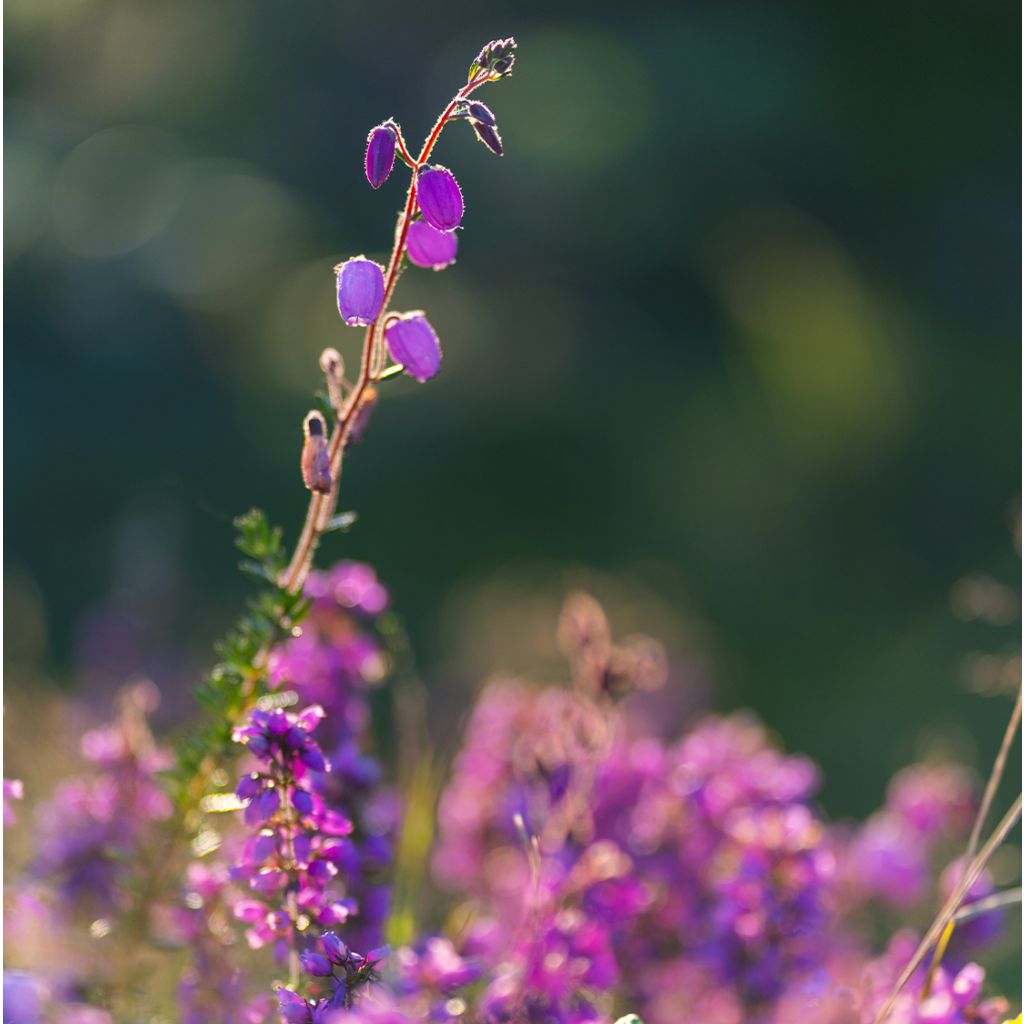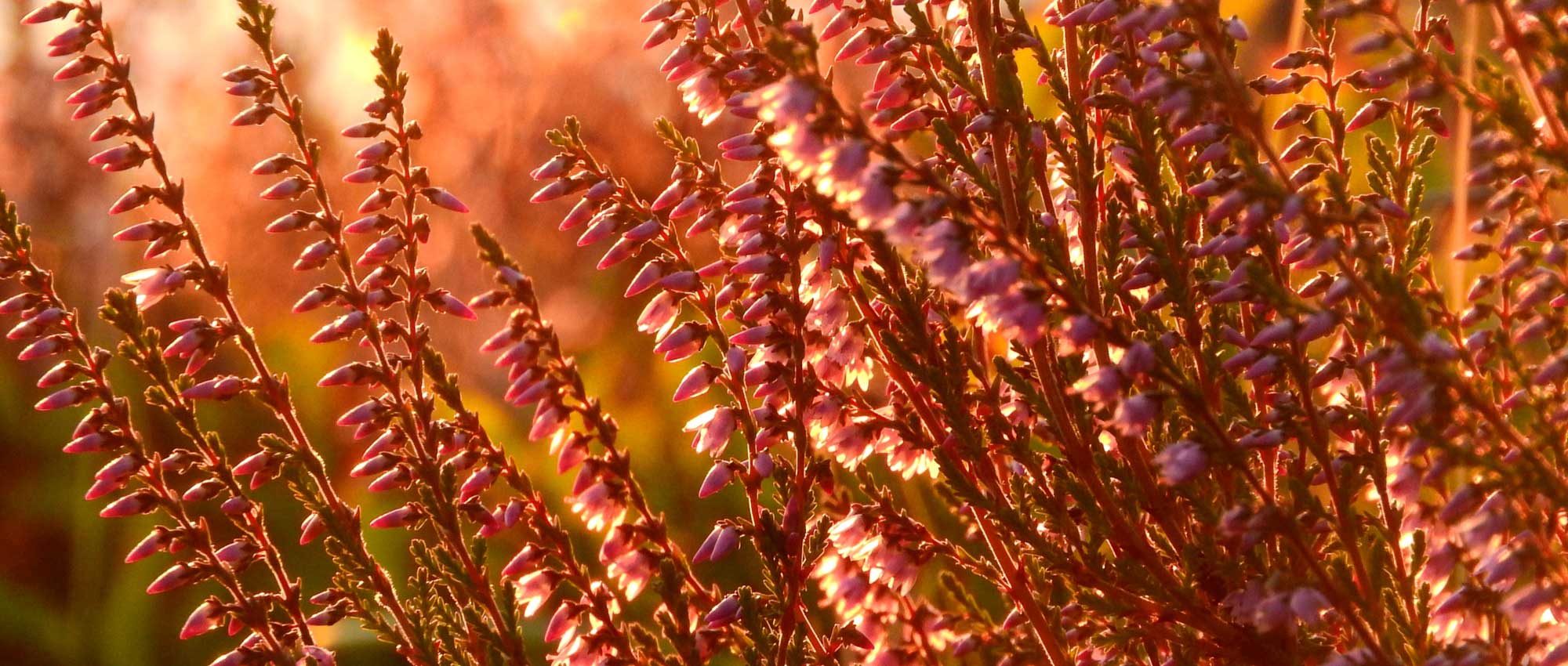

Daboecia cantabrica Purpurea - Bruyère de Saint Daboec


Daboecia cantabrica Purpurea - Bruyère de Saint Daboec


Daboecia cantabrica Purpurea - Bruyère de Saint Daboec


Daboecia cantabrica Purpurea - Bruyère de Saint Daboec
Daboecia cantabrica Purpurea
Daboecia cantabrica Purpurea
St. Dabeoc's Heath, Irish Heath, Cantabrian heather
Special offer!
Receive a €20 voucher for any order over €90 (excluding delivery costs, credit notes, and plastic-free options)!
1- Add your favorite plants to your cart.
2- Once you have reached €90, confirm your order (you can even choose the delivery date!).
3- As soon as your order is shipped, you will receive an email containing your voucher code, valid for 3 months (90 days).
Your voucher is unique and can only be used once, for any order with a minimum value of €20, excluding delivery costs.
Can be combined with other current offers, non-divisible and non-refundable.
Home or relay delivery (depending on size and destination)
Schedule delivery date,
and select date in basket
This plant carries a 24 months recovery warranty
More information
We guarantee the quality of our plants for a full growing cycle, and will replace at our expense any plant that fails to recover under normal climatic and planting conditions.
Would this plant suit my garden?
Set up your Plantfit profile →
Description
Daboecia cantabrica 'Purpurea' is a variety of Irish heath that is adorned with purple flowers from summer to early autumn. It is an undershrub with a flexible and spreading habit, bearing dark green, fine, evergreen and dense foliage, particularly useful for forming a ground cover or decorative borders throughout the year. It produces delicate stems adorned with large pendulous bell-shaped, brightly coloured flowers, clearly visible above the foliage. It thrives in light and requires light, well-drained, non-limestone, rather acidic and poor soil that remains moist even in summer.
Daboecia cantabrica, from the family of ericaceae, is native to Western Europe, specifically Ireland, Spain, Portugal and the Azores Islands. This undershrub grows spontaneously on the edge of woodlands and heathlands, on acidic, sandy or peaty, poor soils that do not dry out. This heather is also capable of withstanding temperatures around -12 to -15°C. The 'Purpurea' form is a cultivar of this plant.
The habit of this 'Purpurea' Irish heath is spreading, carried by prostrate, hairy and glandulous branches at the top, which partially straighten up. At maturity, the plant will measure about 40 cm in all directions. Its small, ovate-elliptical, 1 cm long and 4 to 5 mm wide leaves are evergreen, simple, leathery and arranged alternately on the branches. Dark green and glossy on the upper side, they are silvery, hairy and curl at the edges on the underside. The long-lasting flowering begins in June and lasts until September-October. Gathered in loose terminal clusters of 3 to 8 units, the flowers are charming pendulous bells measuring 8 mm long and 3 to 4 mm in diameter. Their colour is a purplish violet. This nectar-rich flowering attracts and nourishes many pollinating insects.
Cantabrian heather is an ideal small shrub for landscaping coastal gardens or further inland if the soil and climate allow. It can be adopted with other varieties with white and red flowers, planted en masse to clothe a rockery or sandy slope where few plants are willing to grow. It can be associated with Armeria maritima Splendens, Azorella, other heathers such as Calluna, or even Asteriscus maritimus. It can also be grown in pots on the terrace or balcony for its slightly wild appearance and long flowering period: choose a large enough container and keep the (exclusively acidic) substrate always moist.
Daboecia cantabrica Purpurea in pictures






Plant habit
Flowering
Foliage
Botanical data
Daboecia
cantabrica
Purpurea
Ericaceae
St. Dabeoc's Heath, Irish Heath, Cantabrian heather
Western Europe
Other Daboecia
View all →Planting and care
Daboecia cantabrica 'Purpurea' appreciates full sun and warmth, which enhances its flowering, but cannot tolerate limestone, clay soils, or dry soils. Therefore, the soil it is planted in should be acidic (peaty, humiferous, loamy, sandy) and always moist. Plant carefully and water during the first two years: if the root ball dries out while the root system is still underdeveloped, the plant will die. Apply mulch when planting to prevent the growth of weeds and to maintain soil moisture. Afterwards, the plant will cover the ground sufficiently to prevent the growth of weeds.
During planting, it is advisable to loosen the root ball a little, trim long roots, and plant in a hole measuring 30x30 cm, filled with a mixture of peat substitute, heather soil, and coarse sand. Water it once or twice a week (with non-limestone water) depending on the ambient temperature, to keep the soil moist while the plant establishes itself. To maintain a compact habit and increase the lifespan of the heather, it is a good idea to prune back the faded branches to 2-5 cm from the previous year's growth each year after flowering, making sure not to cut below the last green leaves. Fertiliser is not necessary, and it is even discouraged to avoid promoting foliage production at the expense of flowering (heathers are generally plants of poor soils).
Planting period
Intended location
Care
Planting & care advice
This item has not been reviewed yet - be the first to leave a review about it.
Haven't found what you were looking for?
Hardiness is the lowest winter temperature a plant can endure without suffering serious damage or even dying. However, hardiness is affected by location (a sheltered area, such as a patio), protection (winter cover) and soil type (hardiness is improved by well-drained soil).

Photo Sharing Terms & Conditions
In order to encourage gardeners to interact and share their experiences, Promesse de fleurs offers various media enabling content to be uploaded onto its Site - in particular via the ‘Photo sharing’ module.
The User agrees to refrain from:
- Posting any content that is illegal, prejudicial, insulting, racist, inciteful to hatred, revisionist, contrary to public decency, that infringes on privacy or on the privacy rights of third parties, in particular the publicity rights of persons and goods, intellectual property rights, or the right to privacy.
- Submitting content on behalf of a third party;
- Impersonate the identity of a third party and/or publish any personal information about a third party;
In general, the User undertakes to refrain from any unethical behaviour.
All Content (in particular text, comments, files, images, photos, videos, creative works, etc.), which may be subject to property or intellectual property rights, image or other private rights, shall remain the property of the User, subject to the limited rights granted by the terms of the licence granted by Promesse de fleurs as stated below. Users are at liberty to publish or not to publish such Content on the Site, notably via the ‘Photo Sharing’ facility, and accept that this Content shall be made public and freely accessible, notably on the Internet.
Users further acknowledge, undertake to have ,and guarantee that they hold all necessary rights and permissions to publish such material on the Site, in particular with regard to the legislation in force pertaining to any privacy, property, intellectual property, image, or contractual rights, or rights of any other nature. By publishing such Content on the Site, Users acknowledge accepting full liability as publishers of the Content within the meaning of the law, and grant Promesse de fleurs, free of charge, an inclusive, worldwide licence for the said Content for the entire duration of its publication, including all reproduction, representation, up/downloading, displaying, performing, transmission, and storage rights.
Users also grant permission for their name to be linked to the Content and accept that this link may not always be made available.
By engaging in posting material, Users consent to their Content becoming automatically accessible on the Internet, in particular on other sites and/or blogs and/or web pages of the Promesse de fleurs site, including in particular social pages and the Promesse de fleurs catalogue.
Users may secure the removal of entrusted content free of charge by issuing a simple request via our contact form.
The flowering period indicated on our website applies to countries and regions located in USDA zone 8 (France, the United Kingdom, Ireland, the Netherlands, etc.)
It will vary according to where you live:
- In zones 9 to 10 (Italy, Spain, Greece, etc.), flowering will occur about 2 to 4 weeks earlier.
- In zones 6 to 7 (Germany, Poland, Slovenia, and lower mountainous regions), flowering will be delayed by 2 to 3 weeks.
- In zone 5 (Central Europe, Scandinavia), blooming will be delayed by 3 to 5 weeks.
In temperate climates, pruning of spring-flowering shrubs (forsythia, spireas, etc.) should be done just after flowering.
Pruning of summer-flowering shrubs (Indian Lilac, Perovskia, etc.) can be done in winter or spring.
In cold regions as well as with frost-sensitive plants, avoid pruning too early when severe frosts may still occur.
The planting period indicated on our website applies to countries and regions located in USDA zone 8 (France, United Kingdom, Ireland, Netherlands).
It will vary according to where you live:
- In Mediterranean zones (Marseille, Madrid, Milan, etc.), autumn and winter are the best planting periods.
- In continental zones (Strasbourg, Munich, Vienna, etc.), delay planting by 2 to 3 weeks in spring and bring it forward by 2 to 4 weeks in autumn.
- In mountainous regions (the Alps, Pyrenees, Carpathians, etc.), it is best to plant in late spring (May-June) or late summer (August-September).
The harvesting period indicated on our website applies to countries and regions in USDA zone 8 (France, England, Ireland, the Netherlands).
In colder areas (Scandinavia, Poland, Austria...) fruit and vegetable harvests are likely to be delayed by 3-4 weeks.
In warmer areas (Italy, Spain, Greece, etc.), harvesting will probably take place earlier, depending on weather conditions.
The sowing periods indicated on our website apply to countries and regions within USDA Zone 8 (France, UK, Ireland, Netherlands).
In colder areas (Scandinavia, Poland, Austria...), delay any outdoor sowing by 3-4 weeks, or sow under glass.
In warmer climes (Italy, Spain, Greece, etc.), bring outdoor sowing forward by a few weeks.
















































